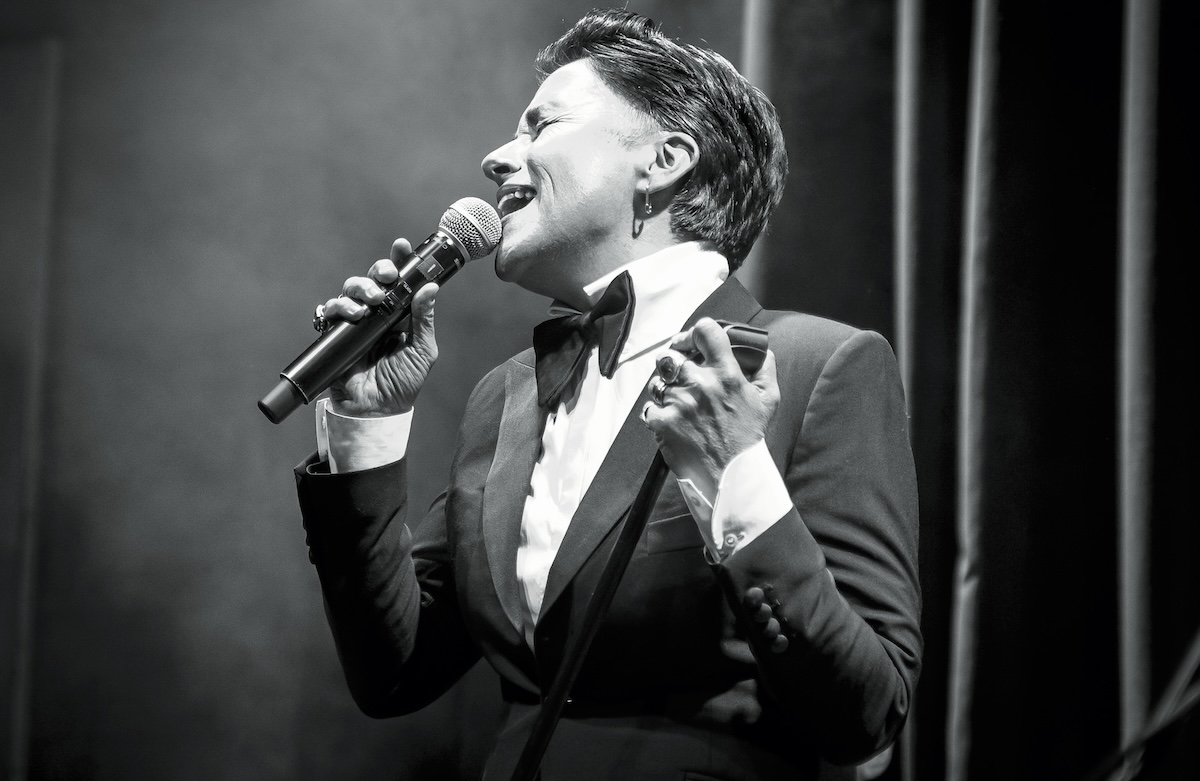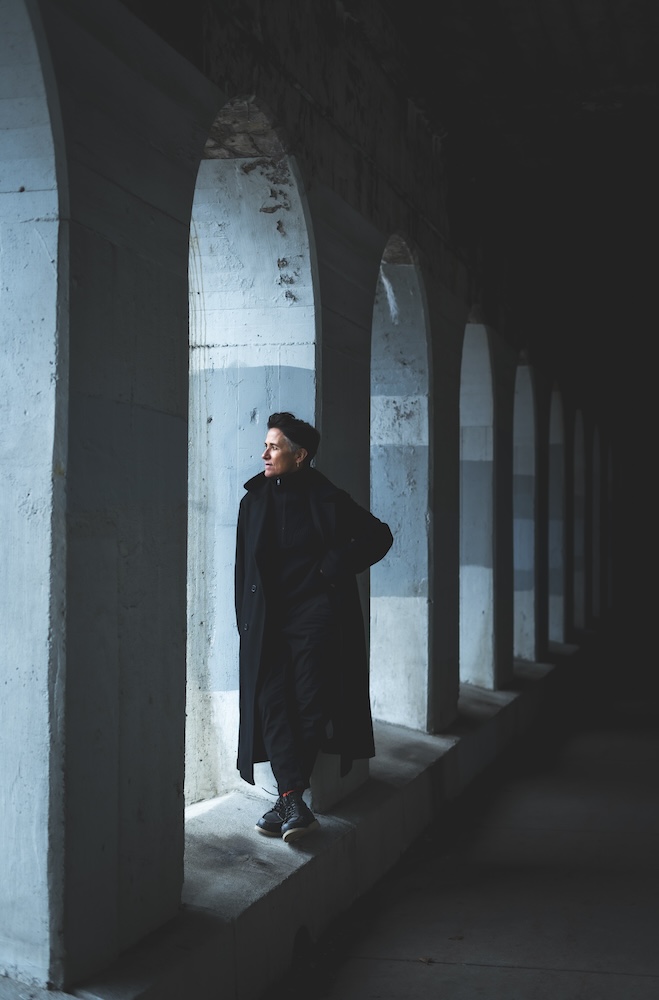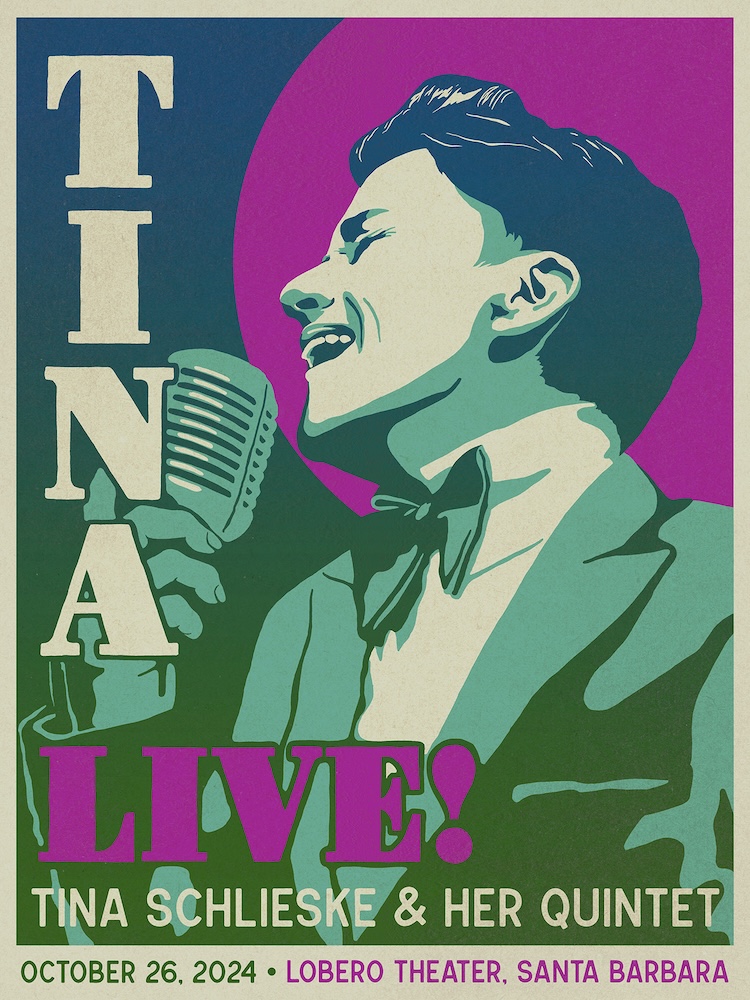Tina and Her Jazz Side: Montecito Rocker Embraces Great American Songbook

Anybody who caught Tina Schlieske’s mini-set closing out the series of six vocalists fronting the “Granada All Star House Band” at the theater earlier this month – where the powerhouse singer belted out her take on The Beatles “I’ve Got a Feeling,” Aretha Franklin’s version of “Bridge Over Troubled Water,” and her own composition “Everyday” – might be stunned to learn that she also sings jazz.
After all, the 20-year-plus Montecito resident has been a dedicated rocker for more than four decades, originally in Minneapolis, where her band Tina and the B-Sides, which released albums independently back in the 1980s and then on Sire Records a decade later, remains a staple of the scene that spawned Prince and The Replacements. Here, Schlieske has mostly played with her West Coast group The Graceland Exiles at clubs, festivals and nonprofit benefits, but still rocks out with abandon, commanding the stage with authority and what can seem at times like a controlled explosion, amping up the audience with her energy and enthusiasm.

So the release of a jazz album called The Good Life last February– issued, appropriately, on Minneapolis’ Shifting Paradigm Records – came as an unexpected pivot, a left turn into territory that stands in sharp contrast to her usual oeuvre. The record is a stunning achievement, with Schlieske taking on eight standards and classics sung by Billie Holiday, Frank Sinatra, Nina Simone, and Tony Bennett with themes that express being charmed, captivated, trapped and/or saddened by love with evident warmth, depth and subtleties of phrasing. Backed by a stellar Minneapolist ensemble of Cody McKinney (bass), Peter Hennig (drums), Bryan Nichols (piano) with Jake Baldwin (trumpet), Brandon Wozniak (sax) and Kevin Gastonguay (organ), Schlieske singing comes across as penetrating and poignant.
Schlieske and most of the band will be performing at the Lobero Theatre, Santa Barbara’s home for jazz, on October 26, which will likely serve as an introduction for many of her fans and beyond. But it turns out that Schlieske has harbored an affinity for jazz since childhood and started exploring torch ballads and more back before the pandemic. She talked about her journey to jazz and the album late last week.
Q. Let’s start with the obvious: What sparked this decision to start singing straight ahead jazz standards?
A. I loved Billie Holiday and Nina Simone back when I was growing up, and I got exposed to John Coltrane and other greats working in a record store when I was young. So it’s always been in me. It just took a while for me to have the confidence to step into that arena. But I believe that as an artist, it’s important to keep growing and challenging yourself. When I started back in 2018, it was also the dark years when Trump was president and these simple love songs were just so appealing to me.
The Great American Songbook is a vast catalog, and yet four of the album’s eight tracks are Billie Holiday songs, so that tracks. How did you choose what to sing?
I feel attuned and have a real affinity towards the way Billie Holiday sang jazz, which is very bluesy, sounding like she’s had a whiskey or two, and maybe a couple cigarettes. I thought I could tackle those songs while being authentic with myself and not overreaching. I need to not only feel the song but also feel that I can sing it. I can really relate to her. But part of the inspiration was also singing Frank Sinatra songs. You can’t get any more misogynistic than Sinatra at that time, so I love the irony of a lesbian in a tuxedo singing his songs. Of course, he was also an incredible singer and studying his vocals and phrasing is a complete schooling.
The album really is quite a remarkable departure from how we usually hear you in town. Not because it’s heartfelt, that’s always in your music – but the combination of so understated but still passionate. Was that a deliberate choice?
Well that was the challenge. I come from bar bands, screaming in basements, so my usual vocal performance is like at 11, push it hard. Doing jazz is about going back to the beginning, trying to train myself to calm down and sing softly, to have the confidence that I don’t need to scream to convey pain or anger or frustration. You can also do it in a whisper and access those emotions in a completely different way.
Here you are trying something new, and you decide to cover songs made famous by Billie Holiday, Frank Sinatra, Nina Simone, and Tony Bennett. That’s jumping in the deep end, not just sticking your toe in the water. Can you share a little more about that threshold of confidence? Was it just like, yeah, I’m ready, or more ‘screw it, I’m doing it’?

It’s both a curse and a blessing that my personality is that if I get moved by something enough to want to do it, I just jump in. Then I start freaking out and wondering, why did I do this? I remember before my first jazz show at Les Marchandson a Tuesday night I started saying to Justine, “I don’t want to do this. I can’t believe I said I would. What was I thinking? Who do I think I am? I’m a rock singer, I’m not a jazz singer.” She told me it would be fine. And it was. People loved it. And I think it’s because when I’m starting to doubt myself, I just have to remind myself that I’m doing it from my heart. If it’s moving me, then it’s going to communicate to other people too. Don’t get me wrong – rock and blues are still so much easier, and I don’t quite have the full confidence of walking on any stage to bring my best with the jazz stuff. But it’s building… [Performing] jazz has been teaching me a lot about singing, how to deliver a song and just how to be part of an ensemble, which is so different from leading a rock band.
These are iconic songs that have been covered thousands of times over the decades. Did you have a concept of adding something new and different to make them your own, or more just the desire to sing them?
I tried really hard not to overthink it. I had the faith that even if in my mind I was singing exactly like Billie Holiday, it won’t sound like her. It will have my unique interpretation. So the only thing I wanted to really bring was a freshness in the sense that these songs have all moved me. So I wanted my vocal performance with the band to move people with my rendition… All due respect to Rod Stewart but (his versions) are about bending the music to his style. I wanted to bend my style towards the jazz and be authentic and respectful to the songs.
Singing jazz is so different in that I try to be as vulnerable as possible. I can hide when I do rock and blues, jump around on the stage and have lots of other distractions that might cover what I feel are my inadequacies of my vocals and my musical chops. But when it comes to jazz, there’s nowhere to hide. So I try to stand in that vulnerability and just let people see and hear me. It’s incredibly fulfilling when people respond to that.
Visit www.lobero.org for more information and tickets







You must be logged in to post a comment.